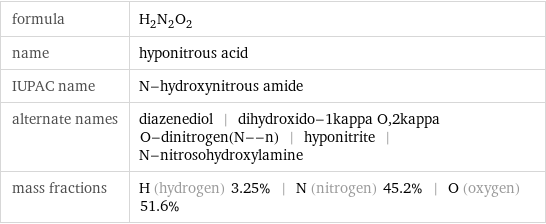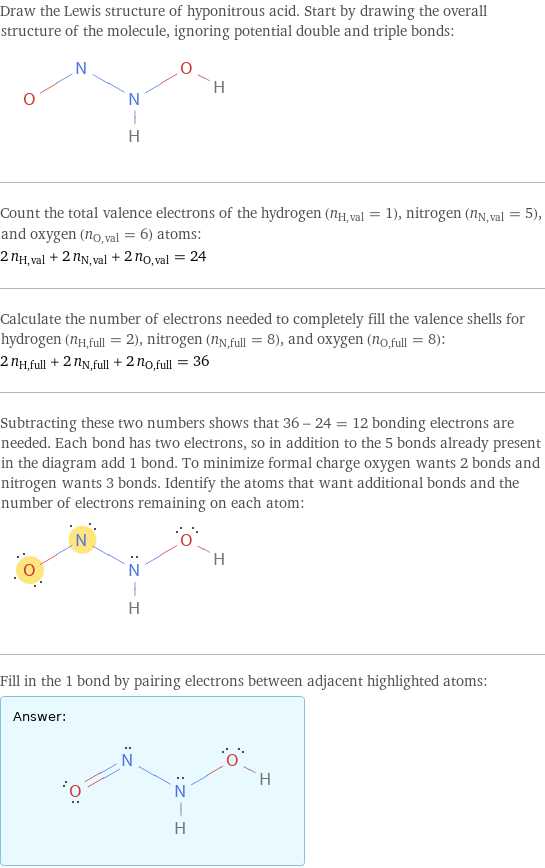Input interpretation

hyponitrous acid
Chemical names and formulas

formula | H_2N_2O_2 name | hyponitrous acid IUPAC name | N-hydroxynitrous amide alternate names | diazenediol | dihydroxido-1kappa O, 2kappa O-dinitrogen(N--n) | hyponitrite | N-nitrosohydroxylamine mass fractions | H (hydrogen) 3.25% | N (nitrogen) 45.2% | O (oxygen) 51.6%
Lewis structure

Draw the Lewis structure of hyponitrous acid. Start by drawing the overall structure of the molecule, ignoring potential double and triple bonds: Count the total valence electrons of the hydrogen (n_H, val = 1), nitrogen (n_N, val = 5), and oxygen (n_O, val = 6) atoms: 2 n_H, val + 2 n_N, val + 2 n_O, val = 24 Calculate the number of electrons needed to completely fill the valence shells for hydrogen (n_H, full = 2), nitrogen (n_N, full = 8), and oxygen (n_O, full = 8): 2 n_H, full + 2 n_N, full + 2 n_O, full = 36 Subtracting these two numbers shows that 36 - 24 = 12 bonding electrons are needed. Each bond has two electrons, so in addition to the 5 bonds already present in the diagram add 1 bond. To minimize formal charge oxygen wants 2 bonds and nitrogen wants 3 bonds. Identify the atoms that want additional bonds and the number of electrons remaining on each atom: Fill in the 1 bond by pairing electrons between adjacent highlighted atoms: Answer: | |
3D structure

3D structure
Basic properties

molar mass | 62.028 g/mol
Units

Chemical identifiers

CAS number | 14448-38-5 PubChem CID number | 61744 SMILES identifier | N(N=O)O InChI identifier | InChI=1/H2N2O2/c3-1-2-4/h(H, 1, 4)(H, 2, 3)/f/h1, 3H Gmelin number | 130275